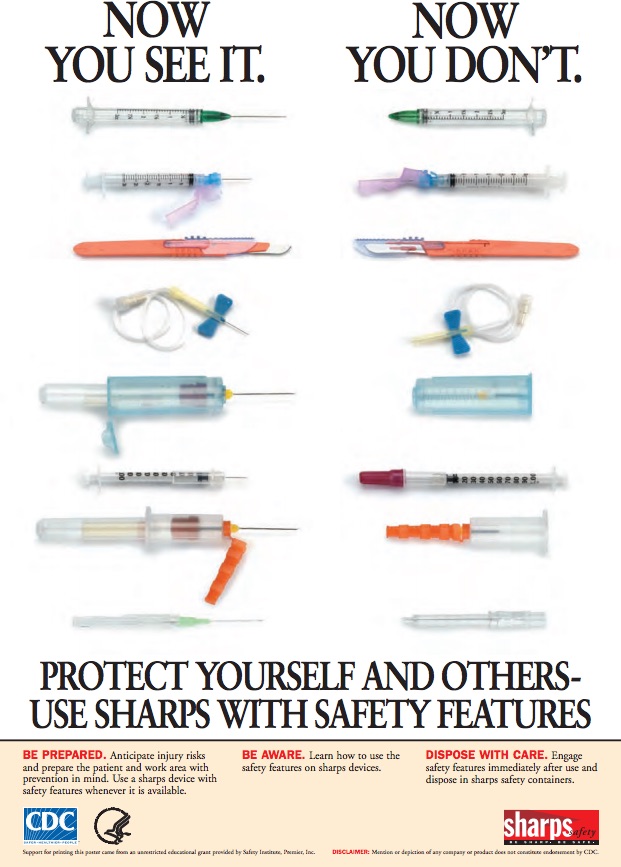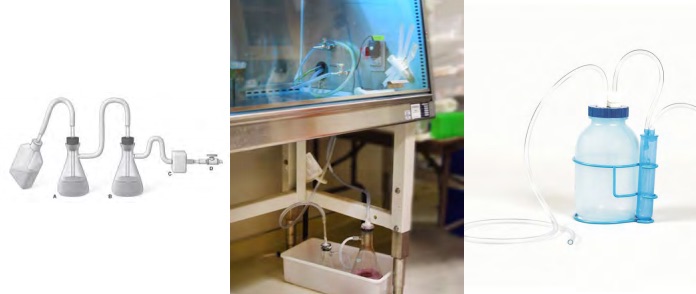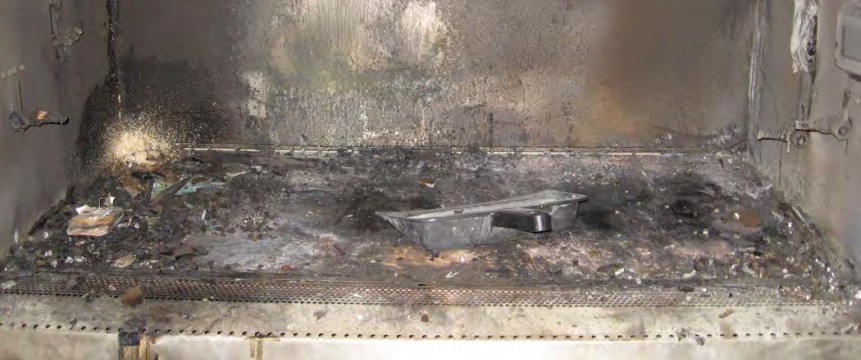Biological safety cabinets (BSC) are designed to provide three types of protection:
- Protection for personnel from material inside the cabinet
- Protection for the material inside of the cabinet from personnel and the environment
- Protection for the environment from the material inside of the cabinet


The left suction flask (above left, A) is used to collect the contaminated fluids into a suitable decontamination solution; an example setup of this is photographed in (middle), an alternate setup shown in (right).
There are three types of BSCs: Class I, II, and III.
Class I
Class I are designed to provide personnel and environmental protection only. The material (research experiment) inside the cabinet is not protected and thus subject to contamination. The use of Class I BSC is not advised at Stanford; talk to Biosafety if you feel you need to purchase one.
Class II
Class II cabinets meet requirements for the protection of personnel, product and the environment. There are four types of Class II cabinets (A, B1, B2, and B3), each differentiated according to the method by which air volumes are recirculated or exhausted.
Class II, type A: The Class II, type A biosafety cabinet does not have to be vented, which makes it suitable for use in laboratory rooms which cannot be ducted. This cabinet is acceptable for use of low to moderate risk agents in the absence of volatile toxic chemicals and volatile radionuclides.
Class II, type B1: The Class II, type B1 biosafety cabinet must be vented. 30% of the air is exhausted from the cabinet while 70% is recirculated back
into the room. This cabinet may be used with etiologic agents treated with minute quantities of toxic chemicals and trace amounts of radionuclides required as an adjunct to microbiological studies if work is done in the directly exhausted portion of the cabinet, or if the chemicals or radionuclides will not interfere with the work when recirculated in the downflow air.
Class II, type B2: The Class II, type B2 biosafety cabinet must be totally exhausted. 100% of the air from the cabinet is exhausted through a dedicated duct. This cabinet may be used with etiologic agents treated with toxic chemicals and radionuclides required as an adjunct to microbiological studies.
Class II, type B3: The Class II, type B3 biosafety cabinet must be vented. 70% of the air is exhausted from the cabinet while 30% is recirculated. This cabinet may be used with etiologic agents treated with minute quantities of toxic chemicals and trace quantities of radionuclides that will not interfere with work if recirculated in the downflow air.
Class III
Class III cabinets are gas-tight, designed for use with high-risk (BSL – 4) agents. There are no Class III cabinets at Stanford University.
![]() Important Information
Important Information
BSCs: Common Errors to Avoid
- Do not block the perforated grills at the front and rear of the biosafety cabinet. The biosafety cabinet’s air intake is disrupted by blocking the grills. Blocking the grills at the opening of the biosafety cabinet may also allow contaminated room air from entering the cabinet without filtration.
- Do not store unnecessary equipment or supplies in the cabinet. The more cluttered the cabinet, the greater the disruption to it’s air flow.
- Do not use the top of the cabinet for storage. The HEPA filter could be damaged and the airflow disrupted.
- Never disengage the alarm, as it indicates improper airflow, thereby effecting performance and endangering the researcher or the experiment.
- Never completely close the window sash with the motor running as it may cause the motor to burn out.

Result of use of open flame in a BSC.
